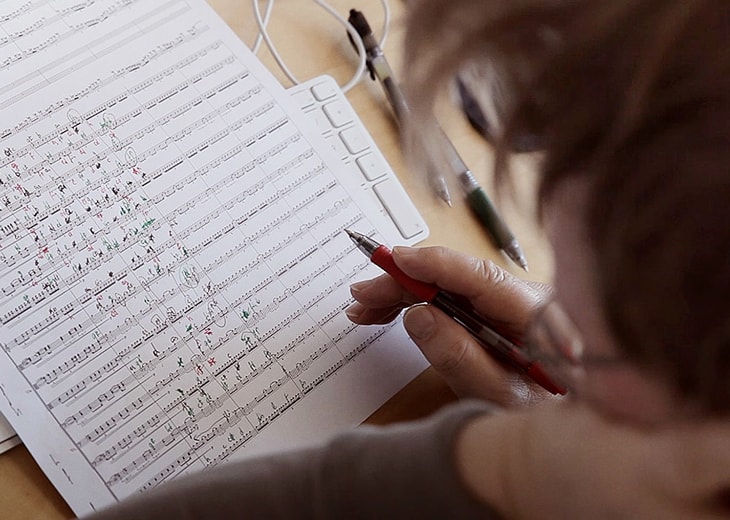Listening Guide: Xenakis’ Thalleïn
31 Oct 2017

Philip Cashian, composer and Head of Composition at the Royal Academy of Music, gives an in-depth guide to Georg Friedrich Haas‘ 21st century masterpiece in vain.
in vain is a monumental piece of music lasting 70 minutes. The title alludes to the spiral structure of the work ‘returning to a situation believed to be overcome’ (Haas). The frenetic descending figures of the opening minutes return at the end of the work having travelled through countless transformations and explorations of timbre, harmonic manipulation, shifts of tempo, throbbing rhythms and pure sonic ingenuity.
Light and dark: For me, in vain is so relevant and forward looking as it questions the whole experience of what listening to live music in a concert hall should be. It stretches the listener’s attention for a single span of 70 minutes’ worth of music and twice plunges the concert hall into complete darkness. If lighting is employed to great effect in musical theatre and live rock and pop concerts why shouldn’t it be used in contemporary classical music?
Structure: Haas builds the piece out of very clear musical ideas. There is no melodic material in the work and all pitch material grows from an investigation of the notes and partials of the harmonic series. This allows Haas to construct music that integrates quarter tones seamlessly into the musical fabric giving the work a highly individual, other worldly character. The endless manipulation of pitch and rhythm stretched over relatively long spans of time gives the music an almost primal quality. Haas is digging down into the very nature of how what we are hearing functions. He also thinks of the music in layers giving the piece a geological aspect.
The overall structure of the work is surprisingly simple considering the sophisticated and detailed musical grammar. Here are some defining moments to listen out for:
05:22 This marks the beginning of the second section as the scurrying descending scales of the opening minutes disappear. The music freezes on a chord that has extremely high notes played on the accordion making the music sound electronic.
15:04 At this point, Haas introduces pulsing, static chords underpinned by subtle changes of orchestration. Quarter tone glissandi twist and stretch the surface of the music. This kind of writing gives the ‘bar to bar detail’ that engages the listener’s ear over such slowly transforming spans of time.
24:20 The four horns descend down through the notes of the harmonic series – a fundamental building block of the work.
28:31 Tremolos in the percussion, accordion and wind are the first hint that the music will return to its scurrying opening material.
44:15 Repetitive figures introduced in the percussion and strings begin a climactic section of the piece.
53:42 Does the piece have a climax and, if so, is this it?
59:00 A return to the opening music of the piece.
Published: 15 Jan 2020